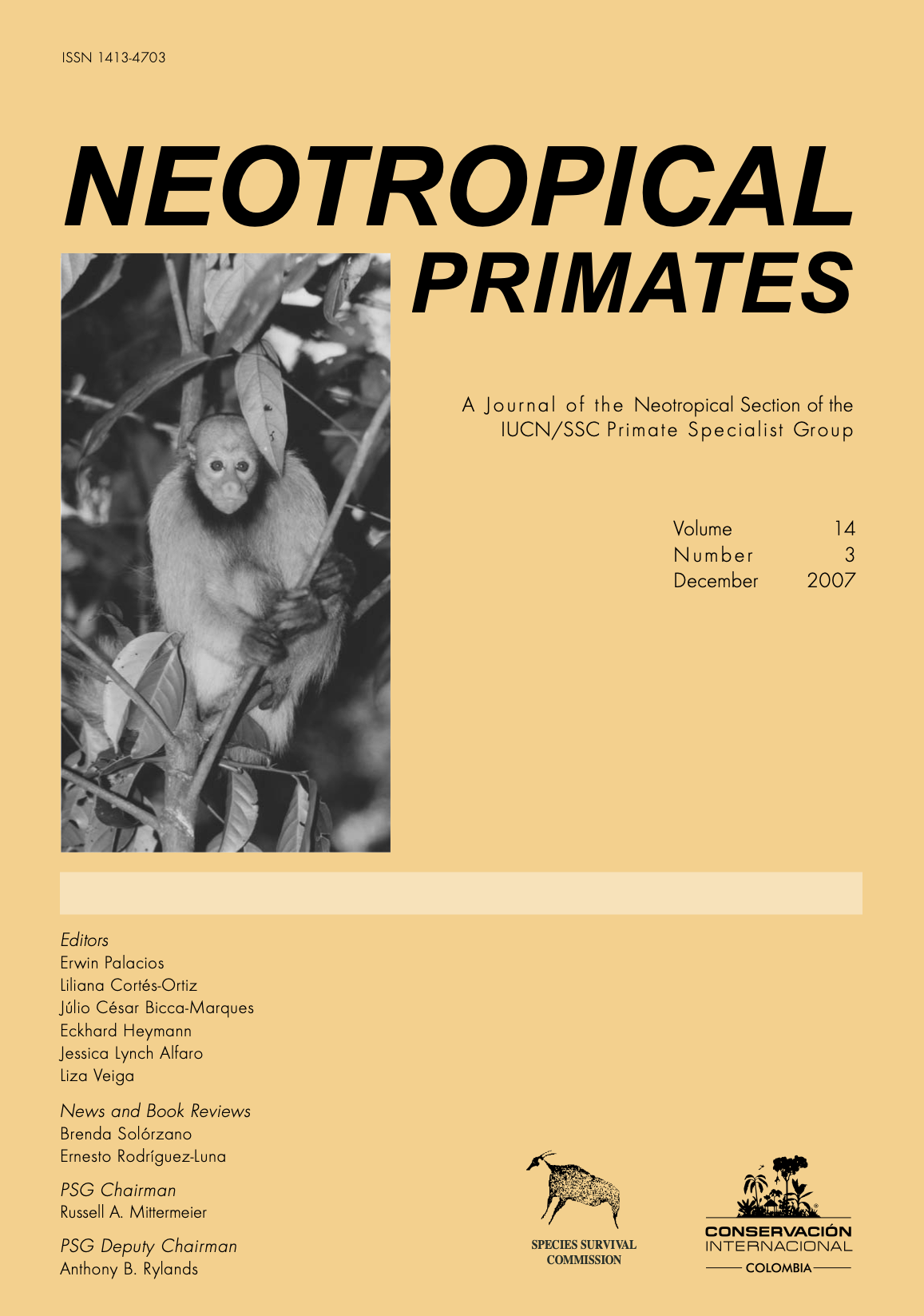Flora bacteriana de la cavidad oral del mono tití (Saimiri oerstedii) y su perfil de sensibilidad a antibióticos
DOI:
https://doi.org/10.62015/np.2007.v14.650Keywords:
Saimiri oerstedii, Costa Rica, antimicrobial resistance, oral bacterial floraAbstract
The bacterial microflora present in the oral cavity of 33 squirrel monkeys (Saimiri oerstedii, 31 wild and 2 captive) and its antimicrobial sensibility was studied. A sterile swab was used to scratch the teeth and oral cavity of every monkey; each sample was resuspended in 2 mL sterile saline solution (0.85%). Transport tubes for aerobic and anaerobic cultures inoculated with these samples were sent to the laboratory. Each sample was inoculated in blood agar plates that were incubated in aerobic and anaerobic conditions. Isolates obtained were identified with APITM galleries (20NE, Staph and 20A) and the sensibility determinations were done using ATB galleries (-G5, -Staph and -ANA). A total of 137 strains were isolated: 106 aerobes (77.4%) and 31 anaerobes (22.6%). Gram negative bacilli were predominant, with Enterobacter the most frequent genus (42%), followed by Burkholderia and Aeromonas (27% each). The most frequent anaerobes were Clostridium (36%) and Fusobacterium (12%). These results show similarities and differences with the bacteria of the oral cavity of humans and of other Costa Rican monkeys. The high frequency of some genera suggests that they are part of the oral flora of the monkeys and not contaminants from the soil. Ninety percent of the Gram negative aerobe bacilli were resistant to cephalotin and 89% to cefoxitine. High resistance rates were obtained with other agents; only two strains were sensitive to every antibiotic tested. In anaerobes the higher antibiotic resistance was observed with metronidazole (26–35%), cefotetan (20%) and clindamicyn (23%), 39% of the strains were sensitive to every antibiotic tested; multiple resistance was lower in the anaerobes (26%) than in the aerobes (77%). This study contributes to the knowledge and preservation of the squirrel monkey, a threatened species, and demonstrates that there are few barriers to the spread of resistant genes in bacteria, even in wild animals.
Downloads
Published
Issue
Section
License

This work is licensed under a Creative Commons Attribution-NonCommercial-ShareAlike 4.0 International License.



